Ford Tourneo Connect vs Skoda Superb Combi – Differences & prices compared
Both models have their strengths – but which one suits you more?
Compare performance, efficiency, price and space directly: Ford Tourneo Connect or Skoda Superb Combi?
Here’s where it gets real: The technical differences in detail
Costs and Efficiency: When it comes to price and running costs, the biggest differences usually appear. This is often where you see which car fits your budget better in the long run.
Ford Tourneo Connect has a evident advantage in terms of price – it starts at 27300 £, while the Skoda Superb Combi costs 35200 £. That’s a price difference of around 7886 £.
Fuel consumption also shows a difference: the Skoda Superb Combi manages with 0.40 L and is therefore distinct more efficient than the Ford Tourneo Connect with 0.50 L. The difference is about 0.10 L per 100 km.
As for range, the Skoda Superb Combi performs slightly better – achieving up to 134 km, about 15 km more than the Ford Tourneo Connect.
Engine and Performance: Power, torque and acceleration are the classic benchmarks for car enthusiasts – and here, some clear differences start to show.
When it comes to engine power, the Skoda Superb Combi has a decisively edge – offering 265 HP compared to 150 HP. That’s roughly 115 HP more horsepower.
In acceleration from 0 to 100 km/h, the Skoda Superb Combi is significantly quicker – completing the sprint in 5.70 s, while the Ford Tourneo Connect takes 10.10 s. That’s about 4.40 s faster.
In terms of top speed, the Skoda Superb Combi performs noticeable better – reaching 250 km/h, while the Ford Tourneo Connect tops out at 186 km/h. The difference is around 64 km/h.
There’s also a difference in torque: the Skoda Superb Combi pulls a bit stronger with 400 Nm compared to 350 Nm. That’s about 50 Nm difference.
Space and Everyday Use: Whether family car or daily driver – which one offers more room, flexibility and comfort?
Both vehicles offer seating for 5 people.
In curb weight, the Ford Tourneo Connect is minimal lighter – 1542 kg compared to 1575 kg. The difference is around 33 kg.
In terms of boot space, the Ford Tourneo Connect offers clearly more room – 1720 L compared to 690 L. That’s a difference of about 1030 L.
In maximum load capacity, the Ford Tourneo Connect performs evident better – up to 3105 L, which is about 1185 L more than the Skoda Superb Combi.
When it comes to payload, Ford Tourneo Connect evident takes the win – 818 kg compared to 584 kg. That’s a difference of about 234 kg.
All in all, the Skoda Superb Combi shows itself to be dominates this comparison and secures the title of DriveDuel Champion.
It impresses with the more balanced overall package and proves to be the more versatile companion for everyday use.
Ford Tourneo Connect
The Ford Tourneo Connect represents a versatile option in the people carrier segment, offering a blend of functionality and comfort for family or business use. Its design combines modern aesthetics with the practicality needed for daily operations, making it an appealing choice for those seeking a reliable and adaptable vehicle. Inside, the Tourneo Connect provides a spacious and well-thought-out interior, ensuring a comfortable driving experience for both driver and passengers.
details @ tourneoconnect.fordpresskits.com
@ tourneoconnect.fordpresskits.com
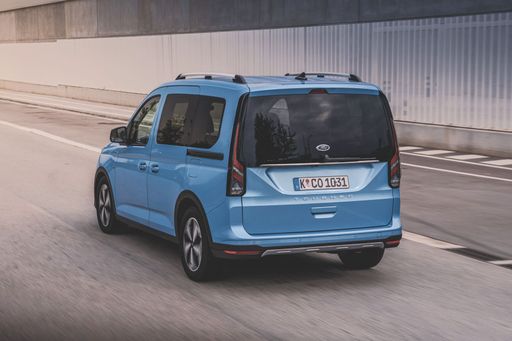 @ tourneoconnect.fordpresskits.com
@ tourneoconnect.fordpresskits.com
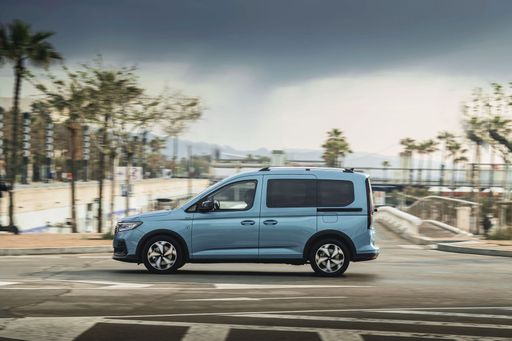 @ tourneoconnect.fordpresskits.com
@ tourneoconnect.fordpresskits.com
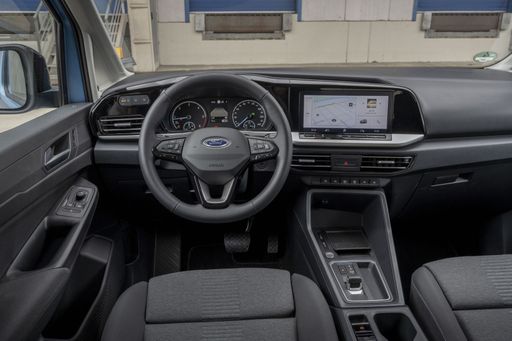 @ tourneoconnect.fordpresskits.com
@ tourneoconnect.fordpresskits.com
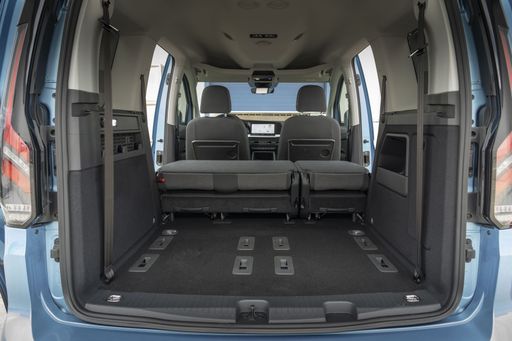 @ tourneoconnect.fordpresskits.com
@ tourneoconnect.fordpresskits.com
Skoda Superb Combi
The Škoda Superb Combi combines practicality and elegance, making it a popular choice for families and professionals alike. Its spacious interior offers exceptional comfort and ample storage, suitable for long journeys and everyday errands. Additionally, the refined design and advanced technology features ensure a sophisticated driving experience.
details @ Skoda Presse Deutschland
@ Skoda Presse Deutschland
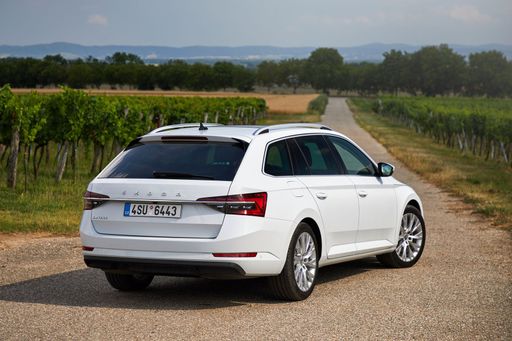 @ Skoda Presse Deutschland
@ Skoda Presse Deutschland

|

|
|
|
|
Costs and Consumption |
|
|---|---|
|
Price
27300 - 41900 £
|
Price
35200 - 51000 £
|
|
Consumption L/100km
0.5 - 6.9 L
|
Consumption L/100km
0.4 - 7.8 L
|
|
Consumption kWh/100km
-
|
Consumption kWh/100km
-
|
|
Electric Range
116 - 119 km
|
Electric Range
124 - 134 km
|
|
Battery Capacity
19.70 kWh
|
Battery Capacity
19.70 kWh
|
|
co2
11 - 164 g/km
|
co2
8 - 178 g/km
|
|
Fuel tank capacity
32 - 50 L
|
Fuel tank capacity
45 - 66 L
|
Dimensions and Body |
|
|---|---|
|
Body Type
High Roof Estate
|
Body Type
Estate
|
|
Seats
5
|
Seats
5
|
|
Doors
5
|
Doors
5
|
|
Curb weight
1542 - 1781 kg
|
Curb weight
1575 - 1853 kg
|
|
Trunk capacity
1213 - 1720 L
|
Trunk capacity
510 - 690 L
|
|
Length
4500 - 4868 mm
|
Length
4902 mm
|
|
Width
1855 mm
|
Width
1849 mm
|
|
Height
1833 mm
|
Height
1482 mm
|
|
Max trunk capacity
2556 - 3105 L
|
Max trunk capacity
1770 - 1920 L
|
|
Payload
563 - 818 kg
|
Payload
497 - 584 kg
|
Engine and Performance |
|
|---|---|
|
Engine Type
Plugin Hybrid, Petrol, Diesel
|
Engine Type
Plugin Hybrid, Petrol, Petrol MHEV, Diesel
|
|
Transmission
Automatic, Manuel
|
Transmission
Automatic
|
|
Transmission Detail
Dual-Clutch Automatic, Manual Gearbox
|
Transmission Detail
Dual-Clutch Automatic
|
|
Drive Type
Front-Wheel Drive, All-Wheel Drive
|
Drive Type
Front-Wheel Drive, All-Wheel Drive
|
|
Power HP
102 - 150 HP
|
Power HP
150 - 265 HP
|
|
Acceleration 0-100km/h
10.1 - 13.5 s
|
Acceleration 0-100km/h
5.7 - 9.3 s
|
|
Max Speed
175 - 186 km/h
|
Max Speed
220 - 250 km/h
|
|
Torque
220 - 350 Nm
|
Torque
250 - 400 Nm
|
|
Number of Cylinders
4
|
Number of Cylinders
4
|
|
Power kW
75 - 110 kW
|
Power kW
110 - 195 kW
|
|
Engine capacity
1498 - 1968 cm3
|
Engine capacity
1498 - 1984 cm3
|
General |
|
|---|---|
|
Model Year
2024 - 2025
|
Model Year
2024 - 2025
|
|
CO2 Efficiency Class
B, E, F
|
CO2 Efficiency Class
B, E, F, D, G
|
|
Brand
Ford
|
Brand
Skoda
|
Is the Ford Tourneo Connect offered with different drivetrains?
Available configurations include Front-Wheel Drive or All-Wheel Drive.
The prices and data displayed are estimates based on German list prices and may vary by country. This information is not legally binding.
